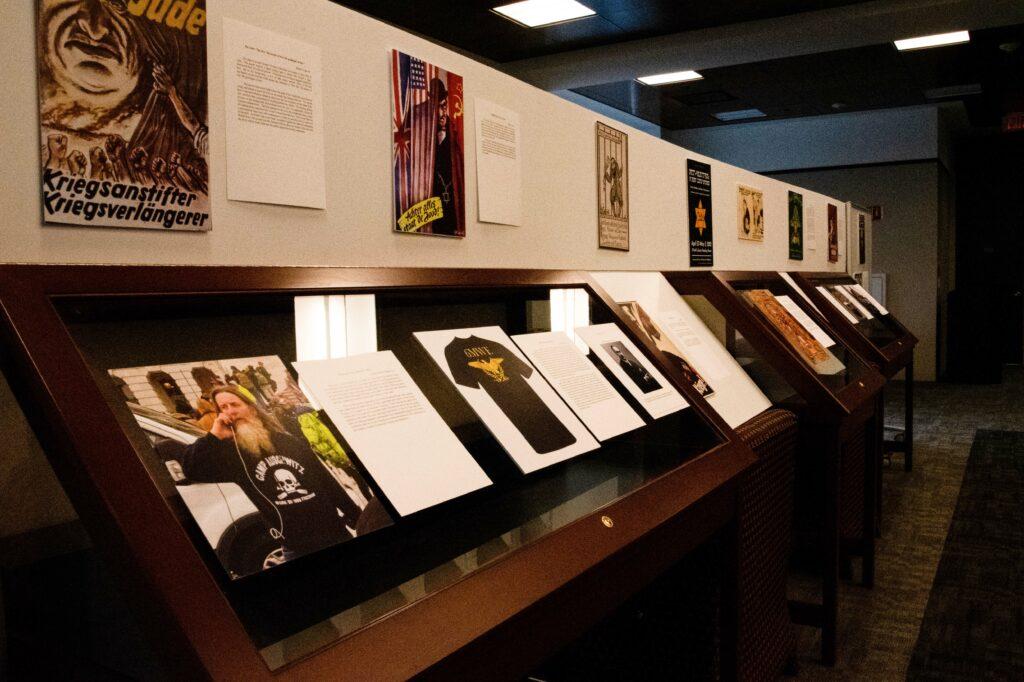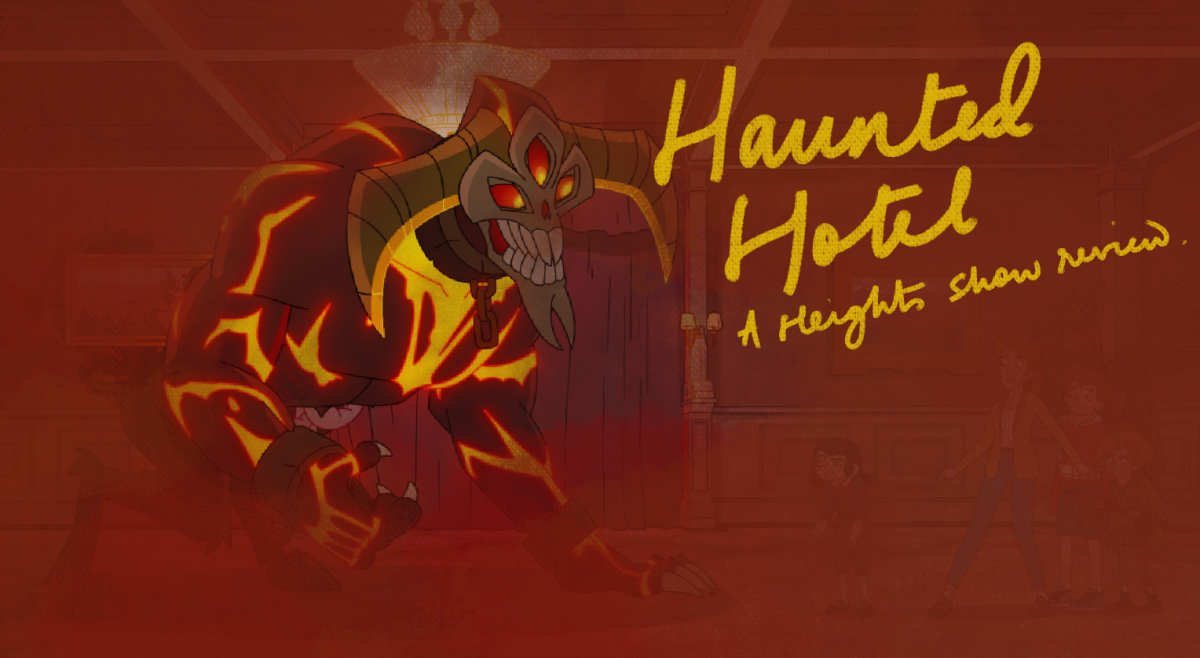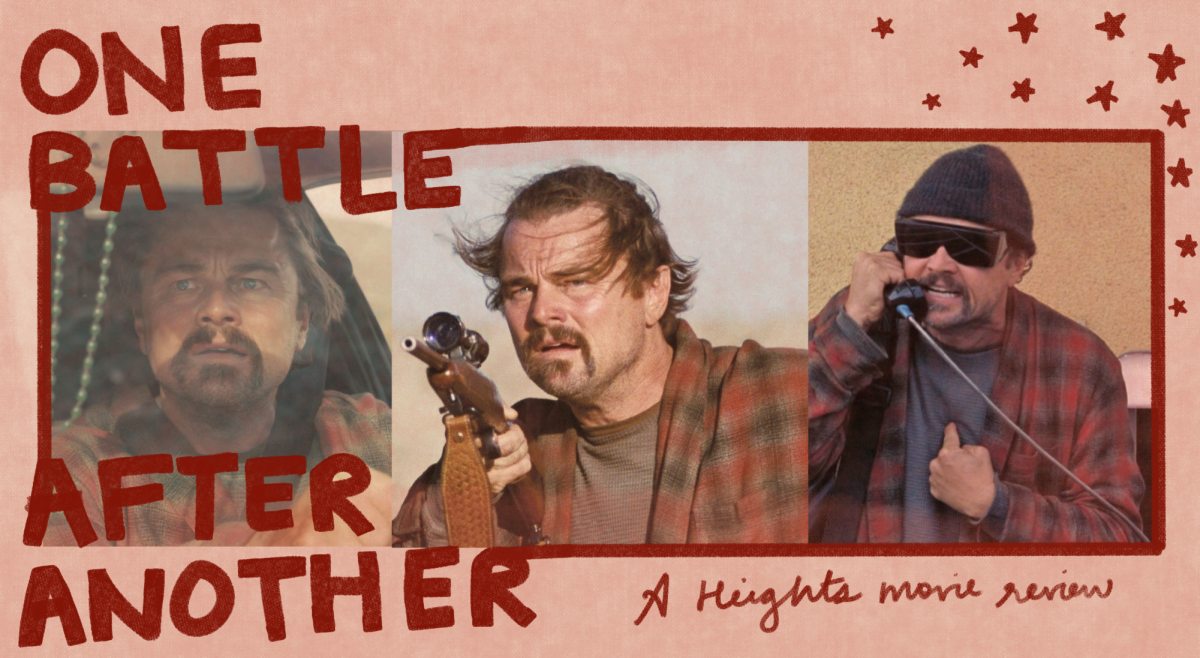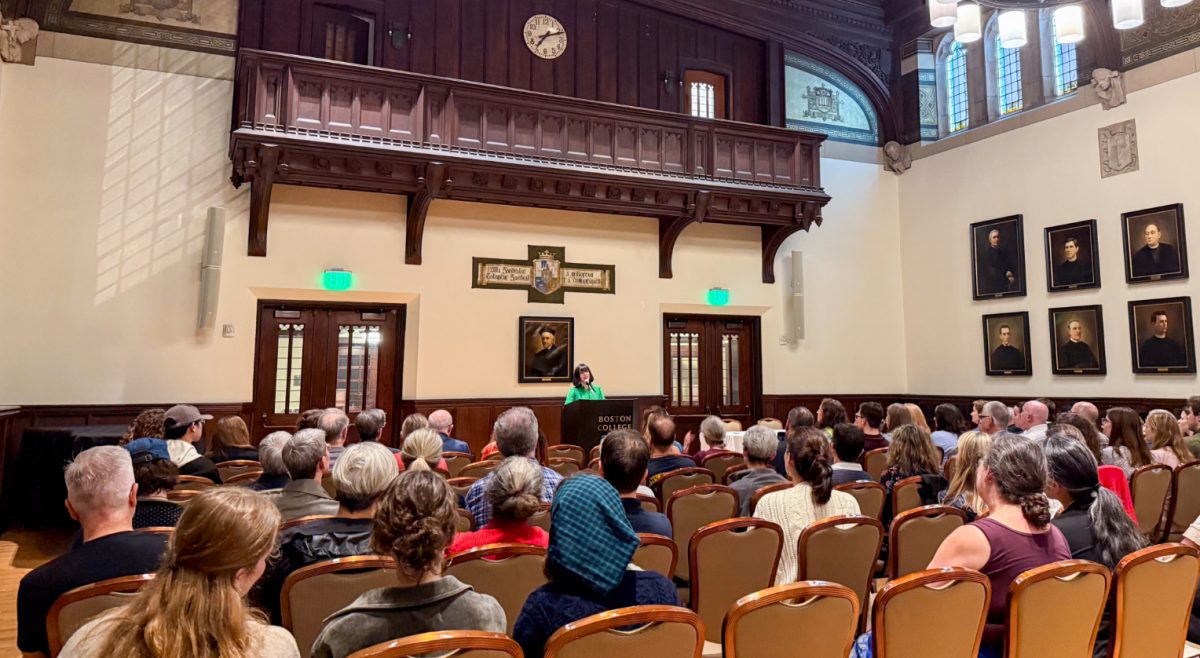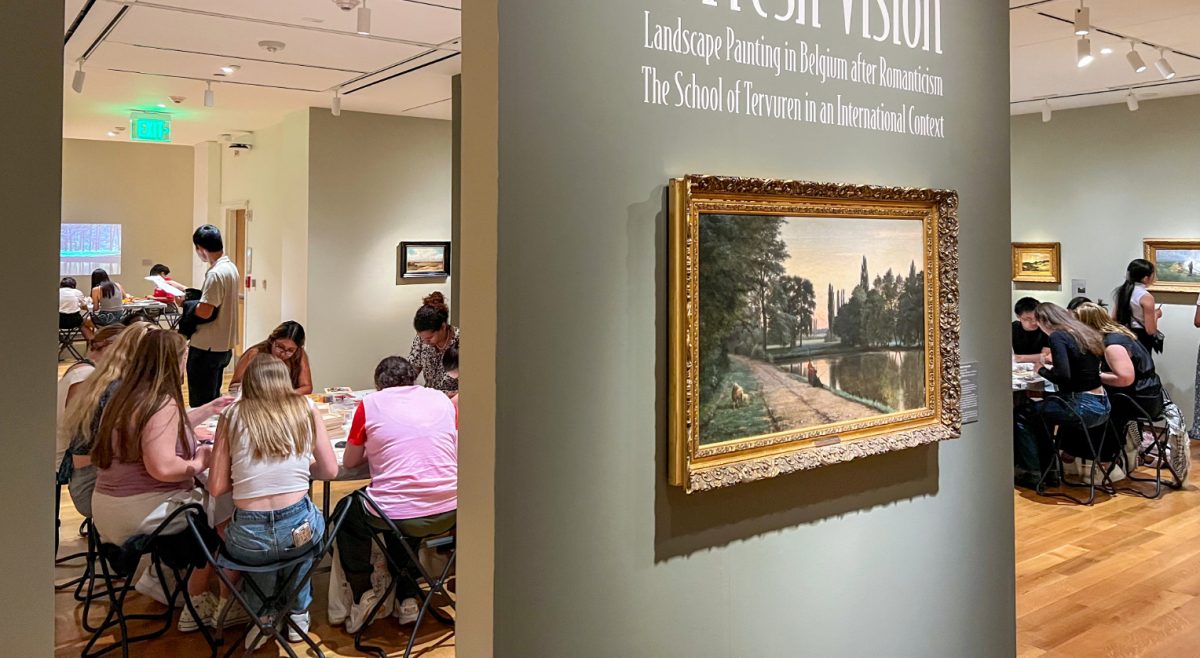From April 27 to May 5, the poster exhibit Anti-Semitism: A Very Long Hatred is on display in the O’Neill Library reading room and was featured at the Boston College Arts Festival. Curated by BC film studies director and professor John Michalczyk, the exhibit features posters chronicling the rise of anti-semitism with captions from students in this semester’s Propaganda Film class.
Graphics were provided by BC Graphics and Photography Services manager Christopher Soldt, and the exhibit was installed by Matthew Magardino, MCAS ’21, Olivia Grohe, CSOM ’21, Avory Xu, MCAS ’22, Nathan Yeung, MCAS ’21, Alexandru Craciun, MCAS ’22, and Dejah Roberson-Cosby, MCAS ’21. The coordinator of the exhibit is Associate University Librarian for Public Services Scott Britton.
A number of posters hang against a white background in the reading room, most of which are from the period around World War II. One image is from medieval German historian Hartmann Schedel’s 1493 work Liber Chronicarum—which translates to Book of Chronicles. The work depicts the burning of Jewish people in medieval Bavaria for allegedly desecrating the host—what Catholics believe to be the transubstantiated flesh of Jesus Christ.
While the posters from the 1940s remind viewers of the rampant and menacing anti-Semitism that spread after World War I and into World War II, this poster serves as a reminder that such hatred for the Jewish people was not new. On the contrary, it followed a pattern that had been in place for many years.
Many of the anti-Semitic propaganda posters focus on stereotypical Jewish features, such as “a beard, a large nose, big ears, and long fingers,” as Peter O’Brien, MCAS ’24, describes in his caption for a poster titled “This is a Poison for Nations.” The Jewish man in the poster is shown sitting on a stack of skulls and counting his money, upholding the narrative of the money-hungry, overly ambitious Jew who will do absolutely anything to become rich.
The posters not only focus on stereotypes of the Jewish people, but also how they were characterized and blamed for aspects of World War II. Jacob Reinsdorf, MCAS ’21, explains one such poster, titled “Jewish Plot Against America,” describing the figures of Winston Churchill and Joseph Stalin shaking hands as a Jewish face looks down over them. Reinsdorf said the Germans’ intended to show how Jews were to blame for the alliance between the Soviets and the British in World War II in this poster. Though the allies were the real enemies of the Nazis in the war, this poster attempts to villainize Jewish people as if they were the greatest threat to the Nazis and to Germany.
Unfortunately, the hatred and anti-Semitism prevalent in these older posters is not gone. Three photographs on the front panel of the exhibit depict events that have happened within the past five years. One image is of a man wearing a sweatshirt that reads “Camp Auschwitz” at the Capitol insurrection on Jan. 6, 2021.
Another photo from September 2018 shows a mob of Neo-Nazi anti-migrant protesters gathering in the streets of Chemnitz, a city in Saxony, Germany. Phrases such as “Jewish pig, get out of Germany” were shouted at a restaurant in Chemnitz, revealing the anti-Semitic sentiment of the German far-right, as stated in the caption by Nathan Lee, MCAS ’21.
A third photograph, also from 2018, depicts a memorial at the Tree of Life synagogue in Pittsburgh, Pa., where 11 people were killed. The writer of the caption, Dylan Migliore, CSOM ’21, also details how the conspiracy about a Jewish goal of world domination has been in existence for many years, beginning with Adolf Hitler and the Nazi party. The attack at the Tree of Life synagogue was the deadliest attack incited against the Jewish community in U.S. history.
When faced with anti-Semitic propaganda beginning in the 15th century through World War II and into the modern era, it is evident by these posters that this form of hatred has been prevalent for years and has not gone away. The exhibit aims to unveil how anti-Semitism, although largely associated with the atrocities that took place against the Jewish community during World War II, still persists today.
Featured Image by Nicole Vagra / Heights Staff

